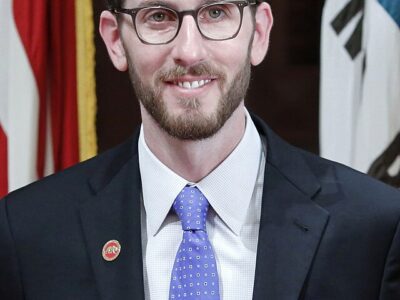Confessions of a Regulatory Czar
The official title of the White House’s regulatory czar is deceptively abstruse, the Director of the the Office of Information and Regulatory Affairs (OIRA) within the Office of Management and Budget (OMB). But OIRA plays a crucial role in government policy by reviewing all major proposed regulations. Environmentalists have long decried OIRA as a place where good regulations go to die.
Defenders of OIRA have made two key arguments. One is based on OIRA’s formal mission, which is to ensure that regulations pass cost-benefit analysis. The other is based on OIRA’s seat within the White House, which may allow it to ensure that agency regulation are in accord with presidential policies. The debate over OIRA has focused on the legitimacy of these roles as opposed to efforts by agencies such as EPA to implement their missions. For instance, I posted earlier this week on whether OIRA really has the expertise to perform its purported role of overseeing cost-benefit analysis.
Cass Sunstein, who recently stepped down from heading OIRA, devoted much of his prior academic career to advocating expanded use of cost-benefit analysis. Now that he’s returned to Harvard Law School, he has posted a paper looking back at his OIRA experience and defending OIRA’s role. You might have expected Sunstein’s defense to center on cost-benefit analysis or maybe on the importance of Presidential authority over agencies. Quite remarkably, however, he stresses a very different vision of OIRA’s key activities.
Here is how the paper’s conclusion describes OIRA’s role:
The federal government is exceedingly large, and it is important to ensure that before important rules are proposed or finalized, rulemaking agencies have an opportunity to consider the diverse perspectives and information of those who work there. I have suggested that while the President is ultimately in charge, the White House itself is a “they,” not an “it,” and the same is even more true of the executive branch as a whole. While OIRA’s own views may be significant, and will be conveyed, OIRA is the convener of an interagency process that draws on the specialized competence of experts throughout the federal government. In many cases, OIRA transmits far more comments from other agencies than on its own. To be sure, costs and benefits are an important and sometimes critical part of the review process, especially for economically significant rules. But most rules do not qualify as economically significant, and in most cases, costs and benefits are not the central issue.
This is a striking example of mission creep, from OMB’s original role as a supposed guardian of economic rationality to a mission of representing the entire executive branch on all aspects of regulation. The information in question need not relate at all to the costs or benefits of a regulation — for instance, Sunstein indicates that part of OMB’s role is to ensure that the agency’s legal analysis is reviewed by other government agencies (with OMB, presumably, acting as arbitrator.)
Sunstein’s description of OIRA’s role raises many new questions. We already have a cumbersome regulatory process that requires agencies to spend years assembling information and performing analysis, then to receive public comment, and finally to undergo judicial review. We now apparently have added an additional stage involving more rounds of input and analysis, including lobbying by other government agencies with an interest in the problem. The agency purportedly charged by law with implementing legal mandates becomes only one of many players at the table. Not surprisingly, there seem to be few examples in which the process has resulted in strengthening regulation or provided more protection to the public, since the agency is the only one of the players whose mission centers on doing so.
This may or may not be an effective way of running an organization. It might provide more information about the merits of regulations, as Sunstein argues. But it dilutes the views of the actors with the most specific expertise. It also reduces responsibility and accountability within the executive branch, since no one in particular has clear decision-making responsibility.
Sunstein’s paper should give scholars plenty to think about. The administrative process established by Congress, and even the formal executive orders about cost-benefit analysis, may be playing much less of a role in the process than we thought. Instead, decision-making may be hidden in a fog of informal interactions within not only the White House but the entire executive branch, based on criteria that have never been formally articulated. Outcomes may be better, as Sunstein argues, but the impacts on transparency, accountability, and the rule of law seem more doubtful.







Reader Comments